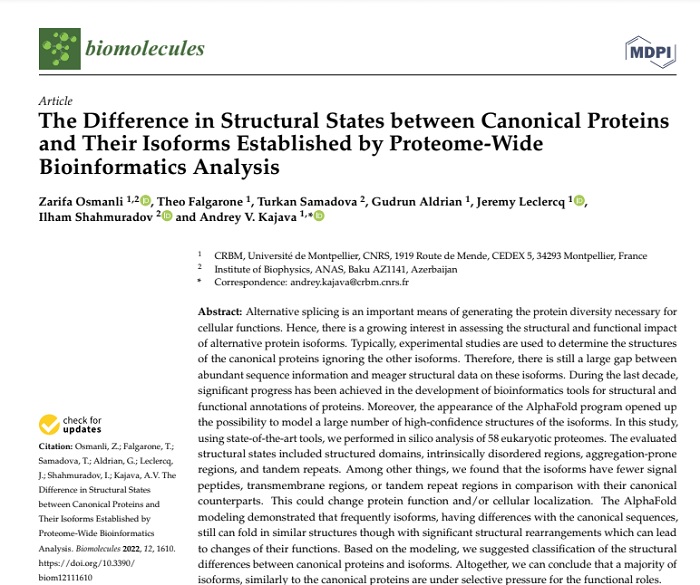The scientific results obtained by the Institute of Biophysics in collaboration with Montpellier University have been published in a high-impact journal
Proteins are complex molecules that perform essential functions in any living organism. Proteins, which are numerous and diverse molecules that perform most of the tasks in cells, are required for the structure, functions, and regulation of cells, tissues, and organs in living organisms.
Typically, experimental research focuses on determining the structure and functions of canonical (i.e., initially discovered and most frequently encountered) proteins. However, research shows that (at least) most proteins also have different (alternative) isoforms. Currently, there is growing interest in identifying and structurally-functional research of these alternative forms, through the perspectives of genomic coding status, cellular functional activity, genetic diseases, etc. Significant progress has been made in recent years in the creation of bioinformatic tools for the annotation of protein structures and functions, as well as in the investigation of the "dark proteome" of cells.
Recently, the results of research by joint doctoral students from the Azerbaijan National Academy of Sciences (ANAS) and the University of Montpellier, such as Zərifə Osmanlı and her colleagues (including another joint doctoral student from ANAS and the University of Montpellier, Türkan Səmədova, and the head of the Integrative Biology Laboratory at the Institute of Biophysics, Corresponding Member of ANAS İlham Şahmuradov), were published in the journal “Biomolecules” with an impact factor of 4.6.
Using modern bioinformatic methods, the authors investigated the proteomes of 57 eukaryotic genomes and obtained several interesting results. In particular, it was found that, compared to canonical proteins, their isoforms have fewer signal peptides, transmembrane regions, and tandem repeats, which may lead to changes in their function or cellular localization. Based on the results obtained, a new classification of structural differences between canonical proteins and their isoforms was proposed, and the hypothesis was put forward that, like canonical proteins, most of their isoforms are also subject to the influence of natural selection in terms of their function.


